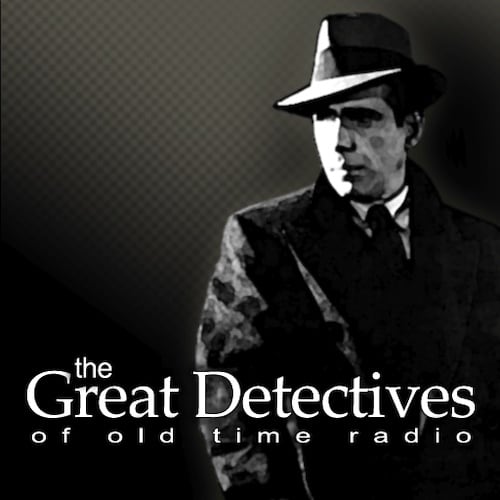Frank Graham created the character of Cosmo Jones for his radio series Nightcap Yarns, where he voiced all the characters in a Monday-Friday program. One of the more recurring stories to emerge was Cosmo Jones, an eccentric little “professor” who solved crimes whether the police wanted him to or not.
In 1943, the series received a poverty row adaptation as Monogram released Cosmo Jones in The Crime Smasher. The main plot centered around a socialite being kidnapped after a gangland killing.
The highlight of the movie was getting an actual on-screen appearance by Frank Graham, who also did radio announcing work and starred in the more serious detective program Jeff Regan, Investigator in the 1949-50 season. He had also served as narrator for a lot of short subjects and animated features (the most famous of which was Disney’s The Three Caballeros). Graham does a great job embodying the character of Cosmo Jones, the small, eccentric professor. He shows some decent physical comedy skills and is fun to watch as far as that goes.
The rest of the movie is weak. It feels unfocused at times. Edgar Kennedy and Mantana Moreland, two Monogram mainstays, were in the film but the script didn’t give them a lot to work with. The story is simple enough, but seems to get sidetracked, and much of the humor doesn’t land. Like many films, they felt the need to tack on a boy-girl romance between two side characters that just isn’t that compelling. It mostly seems to take away from the main attraction of seeing Cosmo Jones work on-screen. The film is not horrible or particularly offensive, but it isn’t good, either.
The film’s an odd curiosity for modern viewers. It’s a movie adaptation for a radio character for whom we have scanty recordings. The one episode we do have from Frank Graham’s run on Nightcap Yarns that features Cosmo Jones includes a fight between Jones and several policemen that would have taken Monogram days to shoot and an elaborate stunt in a museum that would have probably blown their production budget for the entire year. All this occurred in a twelve-minute radio story with nothing more than Frank Graham’s voice and a few sound effects.
As such, this was one of those ideas that would never have worked as a film, but you can’t blame either Monogram for giving it a try in the midst of World War II. I can only recommend it if you’re curious to see Graham act or if you’re a completist fan of either Kennedy or Moreland.
Rating: 2.25 out of 5
